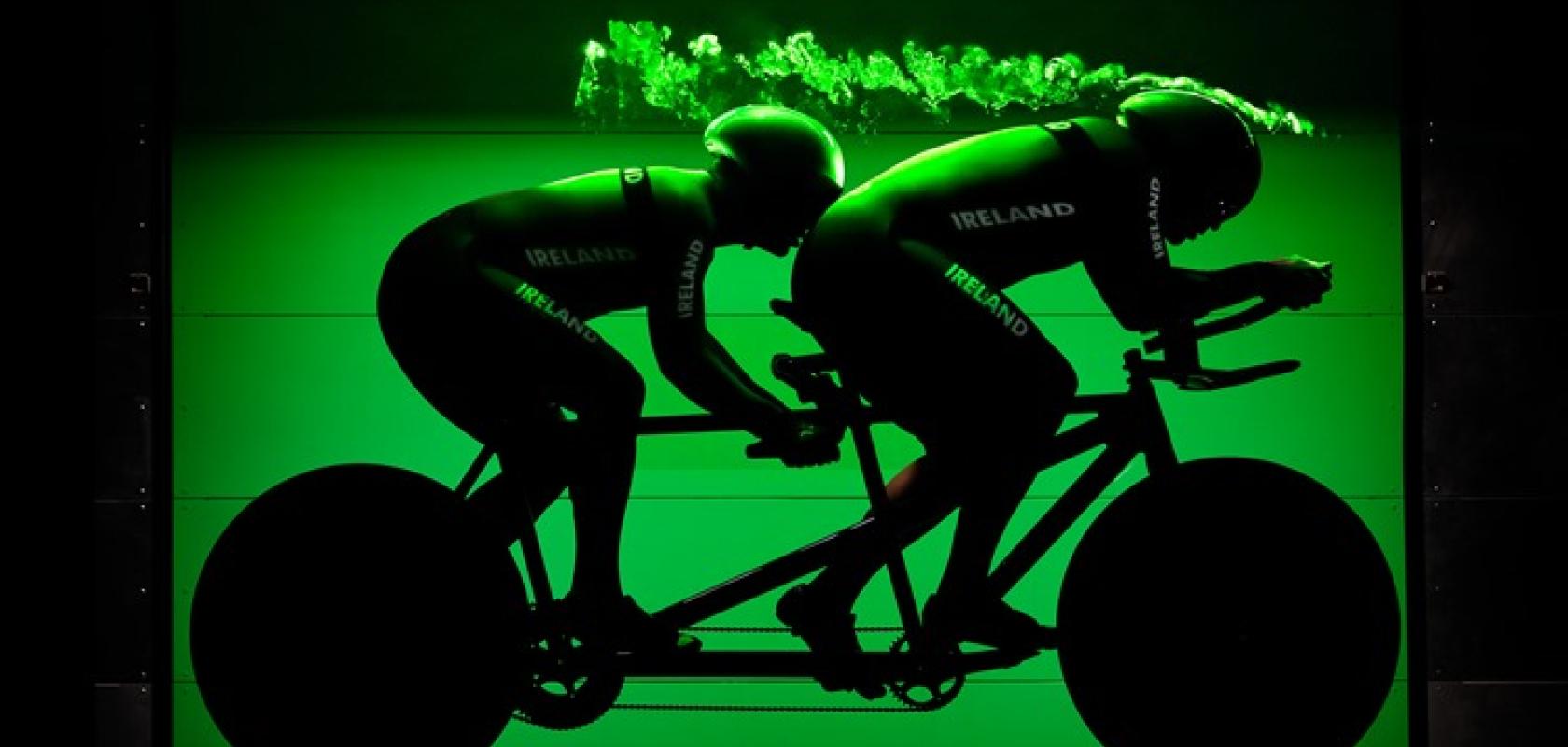A project carried out at the National University of Ireland Galway and Eindhoven University of Technology (TU/e) and KU Leuven has been exploring the role of aerodynamic science in Paralympic cycling.
Dr Eoghan Clifford, National University of Ireland Galway, a 4-time world champion and current Paralympic Champion has joined forces with Professor Bert Blocken, Eindhoven University of Technology (TU/e) and KU Leuven, to make use of simulation technology to increase the performance of Paralympic cycling teams.
Surprised by the scarcity of scientific research performed on Paracycling where many fundamental insights are lacking, Dr Clifford and Professor Blocken initiated the first open scientific research project ever in Paralympic cycling.
Dr Eoghan Clifford, College of Engineering and Informatics, NUI Galway, said: ‘This has been one of the most exciting and challenging projects I have worked on. The extensive experimental and computational modelling work was unprecedented for Paralympic cycling and indeed for most sports. The work will fundamentally impact Paralympic cycling and will cause teams and engineers to rethink their approach to aerodynamics. This work also opens the door for world-class Paralympic athletes to have the same expertise and equipment available to them as other professional athletes. At the world championships and Paralympics where tenths of seconds can decide medals this work can unlock that vital time!’
The project team consisting of Dr Paul Manion, Dr Yasin Toparlar, Dr Thomas Andrianne, Dr Magdalena Hajdukiewicz, Dr Eoghan Clifford and Professor Bert Blocken combined computer simulation (CFD) with Ansys software on Irish and Dutch supercomputers with wind tunnel testing in the facilities of Eindhoven University of Technology and the University of Liège. The investigation focused on both tandem cycling and H1-H4 handcycling.
This investigation resulted in four key new findings. Applying these findings in races would yield significant gains in terms of time. This research resulted in four key new findings that are generally not what Paracyclists would expect:
The typical time-trial setup with a time-trial handlebar for the pilot and the stoker does not provide the lowest aerodynamic resistance. The stoker holding the seatpost of the tandem bicycle (frame-clench setup) provides a gain of 8.1 s over a 10 km race.
The most aerodynamic race setup of the tandem cyclists is not the one where pilot and stoker bodies are closest to the horizontal. The pilot being slightly more upright gives a benefit of 6.5 s over 10 km.
The most aerodynamic wheel choice for a H1-H4 handcycle is not disk wheels at the rear, as commonly accepted, but two spoked wheels at the rear, because disk wheels would channel the flow between these wheels and create extra suction (drag) on the cyclist body. Spoked wheels at the rear and a single disk wheel at the front would save 16 s on 10 km.
For downhill handcycling, athletes tend to adopt the so-called 6 o’clock position, with the hands in the lowest position and the arms tucked against the body. The 9 o’clock position with hands farthest upstream has a 4.3% lower drag, which gives a gain of 0.8 s over a 500 m descent.
As a 4-time Paracycling world champion and current Paralympic champion Dr Eoghan Clifford has corroborated these findings with the research team and high performance coaches have tested athletes and used the findings to guide these athletes towards better performances.
Professor Bert Blocken, Eindhoven University of Technology & KU Leuven, said: ‘I am passionate about sports aerodynamics because it really pushes the boundaries of computer simulation and wind tunnel testing. In most topics on aerodynamics, accuracies of 5-10 per cent are considered sufficient. In sports aerodynamics however, tenths or even hundredths of percentages can be decisive. This first extensive open project in Paralympic cycling reveals new insights to obtain such gains in these competitions.’
Thierry Marchal, global industry director sports and healthcare, ANSYS, added: ‘As the engineering simulation leader, ANSYS is keen to assist the sport community improving safety and performance of athletes by adopting a technology traditionally used in the aerospace and automotive industries. Elite sport is an ideal window to illustrate the impact of pervasive simulation across all industries.’


